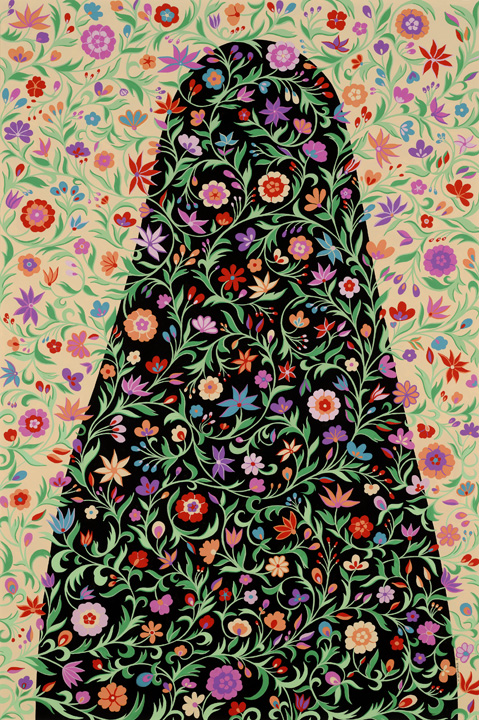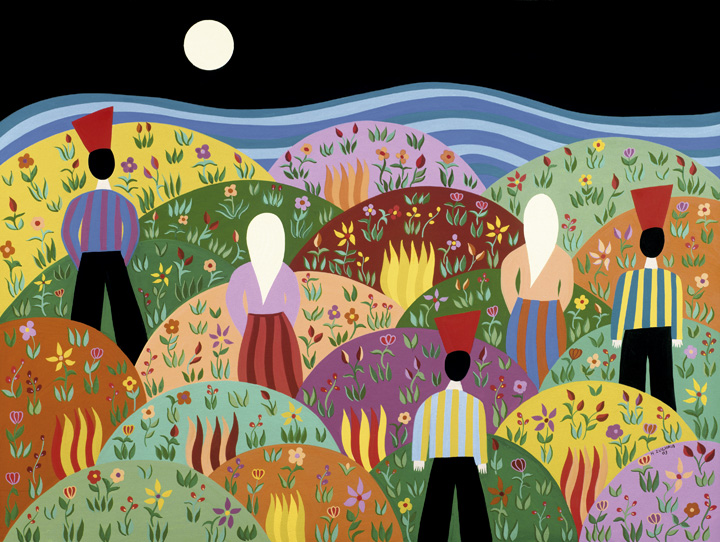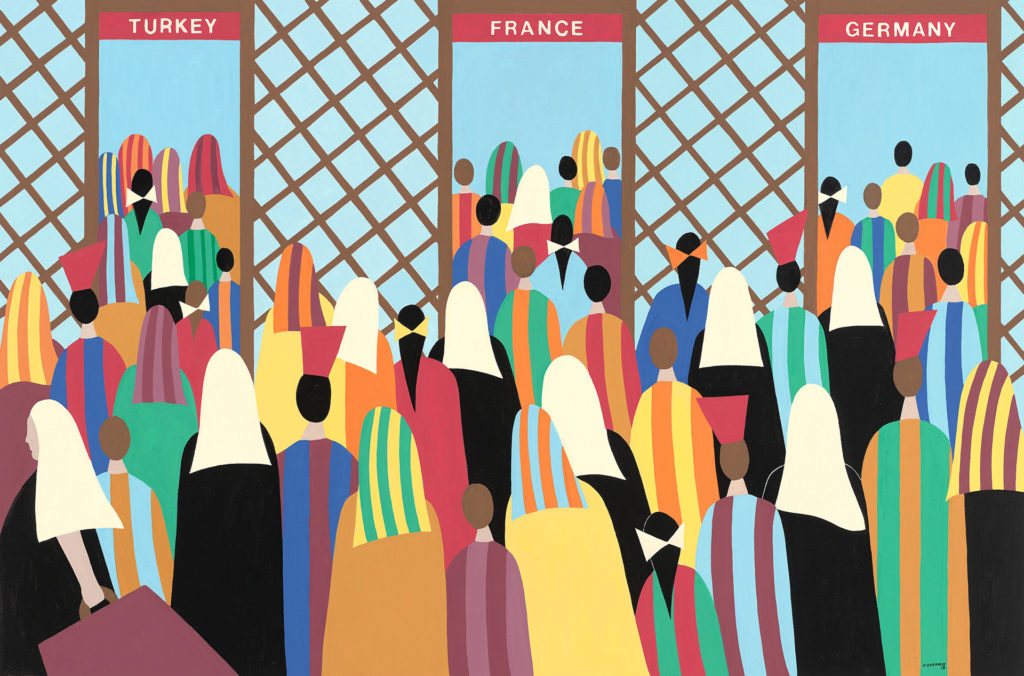“Optimism comes from God, pessimism is born in the brain of man.”
Arabian Proverb
A Lebanese-American painter living in the United States, Helen Zughaib’s pitural universe makes the viewer navigate between two cultures where differences are observed. For Helen Zughaib, it’s an “in-between” is a gray area or the appearance of a third culture or a third country having been influenced by the other two.
Helen’s painting is difficult to qualify. Close to the naïve style, each painting seems a Persian miniature where colors and geometric patterns seem sought balance in its composition. She tends to simplify or stylize her characters in the hope of creating a universality in which anyone who looks at her work can identify herself. It incorporates geometric patterns and colors inspired by Islamic atmospheres developing a great original repertoire of ornamental and decorative motifs. Located at a crossroads between Europe, Africa and Asia, the work of this painter is enriched by contact with various cultures and gives birth to an art with rich and multiple expressions. A new dimension and new perspectives are formed. She builds her painting as a mosaic, piece by piece.

The presence of the Arab woman flies over the different series produced. This female figure does not speak of religion but is a representation of a region of the world. This motif can quickly locate the viewer in the Arab world. Living in America, especially after September 11, the media carries a lot of anti-Arab, anti-Muslim stereotypes. In her work, she tries to fight against these stereotypes by combining elements of East and West, reformulating the image in such a way as to encourage a dialogue encouraging understanding and, of course, mutual respect. This is the case in his work entitled “Midnight Prayers”. She combined elements of Islamic design and a simplified version of the American flag to create a scene in her painting inviting my viewer to enter, to be introspective, to reflect on how we are more alike than ever before. This painting, representing the call to prayer, is remarkable for its symbolism and the richness of its colors – the blues and the greens -, depicting a scene of Arab life from an angle full of spirituality. This painting is now part of the Library of Congress collection.
For Helen Zughaib, this empathy is the most powerful tool that reshapes negative dialogue and misunderstandings. The artist wishes to respond to her environment, she documents herself to paint a humanist work. She tells her story thinking about the most vulnerable among us, at war or in migration. These are usually women and children. For the past 8 years, she has devoted much of her work to the issue of wars and revolutions, particularly with “Arab Spring”. Her new works are marked by references to Pop Art artists such as Andy Wharol or Roy Roy Lichtenstein in “Share o Coke” or “I’d rather sink”. This pictorial change traces a journey from a visual documentation of the initial optimism to the devolution of this optimism towards a freedom.

Helen Zughaib’s latest work is inspired by the migration crisis, which takes a different look at our time, in order to stimulate reflection and experiment with new aesthetic languages. Humanity has been founded from its origins by migration, and art is also a form of migration, as it is reminiscent of in her “Exodus” painting. The paintings of Helen Zughaib force us to consider immigration from a human perspective, in its individual or universal dimension.

Article by Severine Grosjean
Partnership: The Nomad Creative Projects
